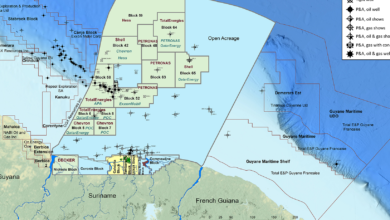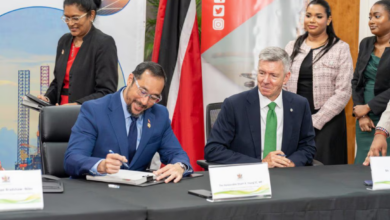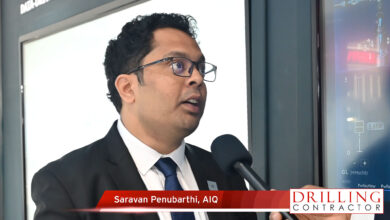Old views of drilling, contracting must be shed so industry can drive meaningful improvements
By adopting new contracting strategies, as well as automation and AI, ARO Drilling seeks to push for true step changes in rig performance
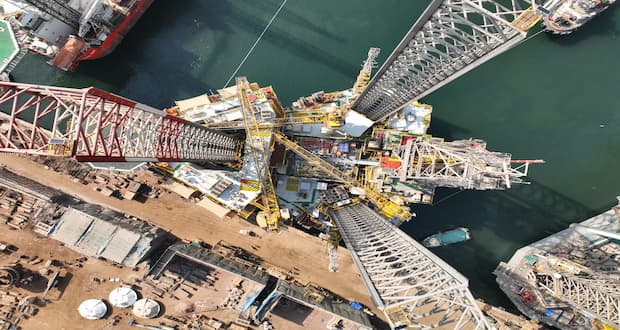
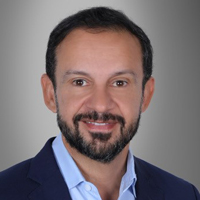 By Linda Hsieh, Editor & Publisher
By Linda Hsieh, Editor & Publisher
Mohamed Hegazi is CEO of ARO Drilling.
From your perspective as CEO of ARO Drilling, what do you see as the biggest near-term challenges for the drilling industry, both for your company specifically and for the global drilling industry?
I think the challenge is twofold. The first is around how the public perception of our industry is changing as people are increasingly exposed to social media and messaging from different bodies, whether government or non-government, on climate change and sustainability. That will have an impact on our industry.
Second is attracting and retaining talent. We need to make sure that people understand that this industry has both longevity and stability, because hydrocarbons will be a part of the world’s energy mix for many years to come. The energy transition is not an on/off switch; it will be gradual.
I think that operators and even companies like ARO Drilling have to start reaching out to the general public, like regular commercial brands. Instead of thinking about being B2B (business to business) or B2C (business to consumers), we have to think in terms of B2H – business to humans. We have to try and make sure people understand how our industry contributes to the world and how we’re taking steps to help with the transition.
Is workforce attraction and retention as difficult a challenge in the Middle East as it is in other parts of the world?
It is definitely becoming increasingly more difficult to attract top talent. Here in the Kingdom of Saudi Arabia, for example, there is an ongoing transformation, and many new sectors are being built up, such as financial services, media and tourism. That’s putting a lot of pressure on the labor market, even though those sectors aren’t necessarily recruiting people with the same technical expertise as we are. But our industry needs more than just engineers – we also need people in support functions throughout the supply chain.
For ARO Drilling, we have committed to building 20 new jackups in the Kingdom with our partner, International Maritime Industries (IMI) in Ras al Khair. This is a multibillion-dollar project, and it’s almost like building a new city. You need to create a whole new supply chain ecosystem that encompasses logistics, medical services, food & catering, training – everything you can think of. This is creating tremendous job opportunities.
As you mentioned, ARO Drilling is in the early stages of a significant newbuild program, which is rare in the industry today. Since you have that opportunity to build new jackups, can you talk about how ARO intends to evolve rig design and/or technologies to create “rigs of the future”?
Because the IMI yard is a brand-new shipyard, it’s going to have a learning curve. For our first two rigs – the Kingdom 1, delivered in November, and Kingdom 2, scheduled for delivery in March – we’ve opted for designs that are modern, yet have high compatibility with existing rigs.
As we kick off Kingdom 3 and Kingdom 4, we’ll be looking at different designs to make the rigs even more mobile and more environmentally friendly. We’ll be working to adopt a lot more emerging and new technologies around automation, the integration of data and artificial intelligence. By the time we reach midway through this project, we want to be building rigs that are not only fit for Saudi Aramco’s operations but that also embody all the newest technology advances available on the market.
As you mentioned, this is really the only major offshore newbuild project happening in the world today. I think we’ll definitely attract a lot of the innovators to contribute to it.
I would imagine you’re already seeing a lot of companies wanting to enter this market.
Yes, we have met with a lot of companies that want to be a part of this big ecosystem being built up in the Kingdom. However, I see that a lot of them have not taken the decision to set up their business here in Saudi Arabia.
I think that, if you believe in this market, you need to be here physically. This kind of business cannot be done remotely. There’s a very high level of involvement required, from engineering to planning to having a very detailed supply chain loop. For companies that want to be involved, they need to come and physically be here in Saudi Arabia.
The industry has been through significant volatility over the past decade. For a company like ARO, which is in the heart of one of the most decoratedand most dynamic markets in the drilling industry, what are your considerations when balancing between investing for growth and exercising capital discipline?
The nature of our newbuild project is that it’s a two-way commitment: It’s a very CAPEX-intensive project, and it’s going to take place over a long period of time. Projects like this – you cannot switch them on and off.
To circumvent the challenges you typically see associated with the up and down business cycles, we engaged in offtake agreements between ARO as a client to the ship builder, and Saudi Aramco with ARO as the client to us. Basically, that means we commit to building the rigs, and Saudi Aramco commits to contracting them. In a way, this Kingdom series is shielded from any potential ups and downs in the market, so it gives us the bandwidth to focus on innovation rather than having to spend time on opportunistic business.
Is this type of operator/contractor partnership something that companies could emulate in other parts of the world?
They can, but it needs a very high-level commitment from the government. In the Kingdom, the project is underpinned by the government’s strategy to secure energy, food and medical resources – three things that were very tested during the COVID pandemic. So this project is playing a big part in their strategy to secure their own manufacturing and supply of rigs to be able to develop oil and gas fields, as well as to undertake carbon injection and storage in the future.
So, yes, I think it can be done, but it needs a very high level of government commitment, which is present here in the Kingdom.
What is your view on the value of automation and digital technologies in terms of drilling performance?
My view is that automation, the use of data and even things that people sometimes talk about in a joking way – like ChatGPT – are inevitable. They will make their way into the industry, and you can decide whether you want to manage it, or you want them to manage you.
I firmly believe that automation will help the industry to improve efficiency, as well as lead to better safety by reducing people’s exposure to hazards. Moreover, it will make our operations more predictable and reduce our carbon footprint.
Data analytics, I think, is still one of the most underutilized technologies in the drilling contractor business. Look at the aerospace industry, for example, and how they use data to analyze their jet engines, predict potential failures and plan for maintenance.
Our industry is still very far from deploying that kind of predictive analytics, which is good and bad. It’s bad because we’re late, but it’s good because it means we have a lot of potential to really change things in a short period of time. And we don’t need to reinvent anything – we can copy what’s being done in other sectors.
What’s the biggest obstacle to making that change?
I think it’s related to people’s mindsets. Some people still question the value of those technologies; they still believe the traditional way of doing things is the only way and that drilling is more art than science. But science, data analytics, artificial intelligence and things like ChatGPT are all like co-pilots on a plane. The stronger your co-pilots, the better the whole flight can be. That’s where the industry is still talking a lot but not really acting very much.
Why is that?
I think that’s related to what you mentioned earlier about the industry’s volatility and the need for companies to think about how they’re committing their capital. I think most drilling contractors think much more about that question of, what happens if there’s another cycle? The difference with ARO – where we are unique – is that we’ve eliminated that uncertainty from the equation. We’re able to think more strategically about how rigs are going to look in 10 or 20 years without worrying about having to really downsize in any major way.
Since ARO is in such a special position, is there any advice you can offer around how operators and drilling contractors can better align their interests so they can create more value or forge better partnerships?
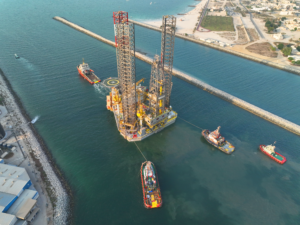
I think there’s a lot of overlap between what operators and drilling contractors want, especially when you look at safety, operational efficiency and consistency. But, for drilling contractors who are not in a joint venture situation, the challenge is always going to be around competitiveness and commercial attractiveness. I think that having more long-term, committed projects can make a difference, where the operator and drilling contractor each take some risk but also have some opportunity for rewards.
You know, the format and the spirit of contracts in the drilling business is the same as it was probably 70 years ago – fundamentally dayrates, fundamentally short term. That creates a certain behavior, both from drilling contractors and from operators. The challenge lies in the contracting strategy; it’s too volatile.
Is that changing at all?
I see some operators beginning to offer more integrated projects where they give a contractor a multi-year scope of wells to drill. I think these kinds of projects could trigger a change in contracting practice and give both sides more assurance.
They might also help solve the labor and talent acquisition issue, because both sides are trying to hire the same kind of people right now. If the operators offer more integrated contracts, that might partially solve that problem.
Going back to technology – if you had unlimited R&D funding, what would be your dream list of technical innovations that you would like to work on?
As I mentioned earlier, a lot of work can definitely be done on automation. In addition to automating well construction processes, we should also look at automating other processes that people don’t think about as much. For example, using drones for inspections so we can eliminate the need for human interaction.
We should also be looking at different power sources for operating the rigs. Maybe we can power a drilling operation with liquid gas, or maybe we can make more use of batteries. Batteries are not where they need to be for an operation like ours, but they’re evolving. Maybe some of the rig’s instrumentation can be powered by battery because they’re lower consumption and more predictable.
We also haven’t looked into how rig moves can be powered differently – there may be a better way to do that rather than using diesel.
Finally, we really need to look more at how to get artificial intelligence and things like ChatGPT much more involved in our business. There are companies looking at using ChatGPT for supply chain, for writing up contracts and policies and procedures, and even to do arbitrations. People often don’t approach technologies like this with an open mind, but in fact, these things progress very quickly. Before you know it, a lot of arbitration will be done through ChatGPT, and a lot of HSE policies will be written by ChatGPT.
I don’t mean to dwell on ChatGPT itself because there are multiple variations of the same concept, but I think it’s an area we should explore in drilling.
Anything else you’d like to see for the future of drilling in the coming years?
I’d like to think that our rigs can be remotely operated, very reliant on data and more accepted globally as a reasonably clean way of prospecting for energy, which the world needs.
Today, a jackup rig needs maybe 100 to 110 people in order to operate. In 20 years, can we reduce that number to just 10? Why not? We have to dream big and take big steps rather than keep making small incremental improvements. The industry hasn’t really evolved that much in the last 50-60 years, and the way the rig functions is still more or less the same. We need a step change in the industry, and we’re going to work on driving that change at ARO. DC

